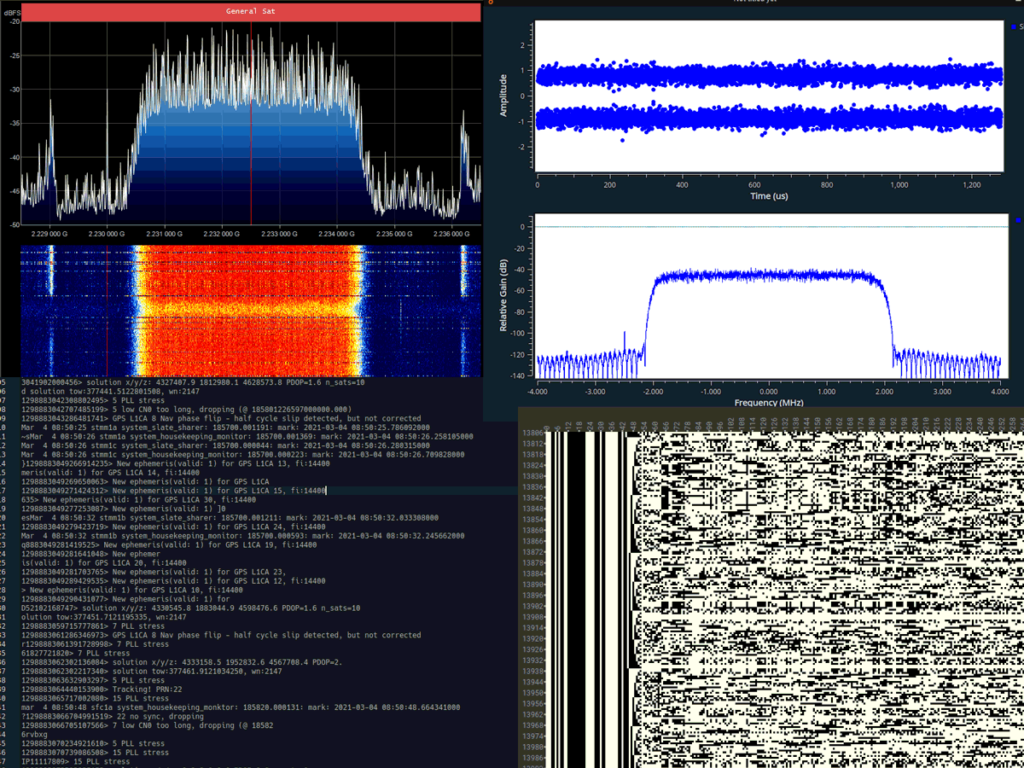Receiving Video Directly from a SpaceX Falcon 9 Rocket + Scott Manley Video
Last week we posted about how several users on Reddit & Twitter worked together to receive and decode text telemetry from the SpaceX Falcon 9 rocket launch using a HackRF, 1.2m dish with custom 2232.2 MHz feed and GNU Radio. In that thread it was hinted that the text telemetry was only a small portion of data contained in the entire signal. It turns out that the remaining data is the SpaceX engineering video feed which is often shown in the official live coverage streams.
Over on Reddit user /u/TRGFelix writes how he was able to receive and decode the video with his own low cost setup involving an Airspy Mini SDR, TV MMDS downconverter and the ubiquitous low cost WiFi grid dish that we've often used for GOES satellite reception and for Hydrogen Line radio astronomy. The software used was the SatDump decoder created by /u/Aang253 which builds on the research done by @r2x0t:
So today at 10:21UTC i got my own recording of Falcon9 video feed downlink on S band 2272.5MHz and with u/Aang253's software SatDump i could easily decode it from the recording straight down to mxf, avi or mp4 video file! Even with very simple recieving setup!
Setup used for receiving was simple wifi grid mesh dish antenna (100x60cm) on a tripod with old MMDS TV downconvertor and Airspy MINI. here is a photo of the setup few minutes before launch But of course its doable without convertor with SDR such as HackRF , two SPF5189Z LNAs and same antenna or even TV dish with DIY S band feed!
Software used for recording was great performing opensource SDR++ by u/xX_WhatsTheGeek_Xx link here https://github.com/AlexandreRouma/SDRPlusPlusS oftware used for decoding was u/Aang253's Satdump software which i will link later as it still needs readme written and confirm it runs without bugs! UPDATE - LINK: https://github.com/altillimity/SatDump
Original MXF video together with CADU file and I/Q file recording 6MSPS int16 here. https://files.altillimity.com/Falcon%209%20OK9UWU/
TRGFelix is also on Twitter as @OK9UWU and he has posted images of his setup, and part of the video he decoded. TRGFelix notes that he is working on a tutorial which we are very eager to see!
Ready! pic.twitter.com/UvN2PXMQJM
— FelixTRG (@OK9UWU) March 14, 2021
Here is the decoded video feed i got today from S band transponder on 2272.5MHz from second stage of #SpaceX #Falcon9 rocket as it was passing above EUrope! Thanks a lot to @aang254 for the decoder software and @r2x0t for the extensive RE work he did on the downlink! Good work! pic.twitter.com/IgEESBA9A1
— FelixTRG (@OK9UWU) March 14, 2021
It's extremely interesting that we can see views of the liquid oxygen floating around inside the stage two tank which is not shown during the official live streams.
As a bonus, this story was also covered by the very popular space YouTuber Scott Manley who has put out a great video popularizing the discovery and touching on a few interesting points such as how SpaceX may be legally required to encrypt these videos in the future (but hopefully not!).

